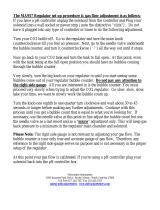4. BASIC INSTRUCTIONS:
Positioning
• The equipment must be placed on a surface capable of bearing the weight of the chiller
complete with water. Install the equipment following the schematic described in this user
guide.
• The chosen position must in any case allow satisfactory ventilation; in particular, there
must be a gap of at least 10 cm (3.9 in) around the back and top for ventilation.
• The equipment must not be placed close to direct or indirect heat sources (ovens,
stoves, radiators, etc.).
• The electrical connection and water supply points must be close to the equipment and
located in such a way the power cable and water hose do not form an obstruction.
• The appliance must not be installed where water jets can be generated. Do not spray
water on the device; this could cause electric shock or fires.
Electrical installation:
• Electrical specification: 180W-230V-50Hz.
• Electrical specification US: 180W-110V-60Hz.
• A moulded IEC C13 power cord is provided. This should be plugged into the IEC
connection on the back of the chiller, then plugged into a suitable power outlet.
• A US 3 Pin (NEMA 5-15P) plug to C13 IEC is provided with the 110V chillers.
Plumbing installation procedure:
• Mains water pressure not to exceed 10 Bar.
• To ensure that the maximum value of pressure of 3 Bar is not exceeded the chiller
integrates a pressure reducer.
• Ensure that the equipment is installed according to local plumbing & water regulations.
• Fit a stop valve on the 3/8” cold water line.
• Make sure the pipe is pushed fully into the fitting; Make sure that, when required, the
pre-attached sealing washer is fitted.
• Turn on the water to flush any impurities, dust etc from the inlet hose and water pipe.
Allow several liters through. Especially for new installations.
• Connect water supply lines following the installation drawings.
• If the filter is new, turn on water and flush at least 10 liters (2.5 gallon) through the filter
before connecting it to the cooler.
• Connect the 3/8” hose to the inlet elbow of the chiller. Make sure the pipe is pushed fully
into the fitting.
• Turn on water and check for leaks.
FRIIA Service manual Page 6
4.1. INSTALLATION DETAILS:





















